Genpuku Shiki
Genpuku-shiki is a ceremony held on Seijin no Hi, the day when Japanese reach the age of 20.
This stage was set next to the Meiji Shrine on January 13th for this ceremony. In the post “Pockets of Light” I covered the young women celebrating Seijin no Hi, which was officially recognized 60 years ago. The Shinto ceremony “Genpuku shiki” reach much further back in Japanese history.
Coming-of-age ceremonies have been observed in Japan since at least the seventh century. Historically, there was no precise age determined for the onset of adulthood, and ceremonies would generally be held between the ages of 10–16 for boys, or 12–16 for girls. In early days, a boy would have his coming-of-age ceremony when he reached a height of about 136 cm. Upon completion of the ceremony, the person would be considered eligible to assume adult responsibilities, to participate in religious ceremonies and to marry.(This and the following text were taken out of several sources you can find if you search the web). First we can look at central part of the ceremony which was already going on when I arrived at the scene.
Male coming-of-age ceremonies were called genpuku, and centered around the presentation of new adult clothing. The new adult would be taken to a shrine, presented with his first adult wear, and would have his hair cut into an adult style. He would also be given a new adult name. In some clans, he would wear thick make-up and have his teeth blackened. Amongst the court nobility, the ceremony was known as kanrei (‘cap ceremony’), as it was from this point that the young man would wear the adult cap called a kammuri. Putting on these caps was what you can see in the sequence above (for men) and the following pictures (for women).The caps were first presented by messengers to the shrine and the delivered to the priests performing the ceremony, again separate for male and female priests.
Female coming-of-age ceremonies, called mogi, were similarly based on the presentation of adult wear. The young woman at her coming-of- age would have her teeth blackened, her eyebrows shaved, thick make-up applied and eyebrows painted on. From the Edo Period (1603–1868), the female ceremony also came to be known as genpuku, and was held for young women when they were aged 18–20, and in some cases at the same time as marriage. If we look at the pictures these customs certainly have changed, no more black teeth !
The ceremony continued with several more sequences of offerings. One distinctive feature of a Shinto festival is the offer prayers and foods such as rice and sake (rice wine) to the gods (kami), thanking the kami and asking for the kami ‘s blessings.This also happened this time, with the addition, that the sake was offered to the new (11) adults, a symbol for purification.
First the sake was delivered to the small “altar” set up in front of the main shrine by messengers dressed in white.
Then a priest was coming to pray and prepare the sake together with another priest, one holding the sake container to serve the young adults.
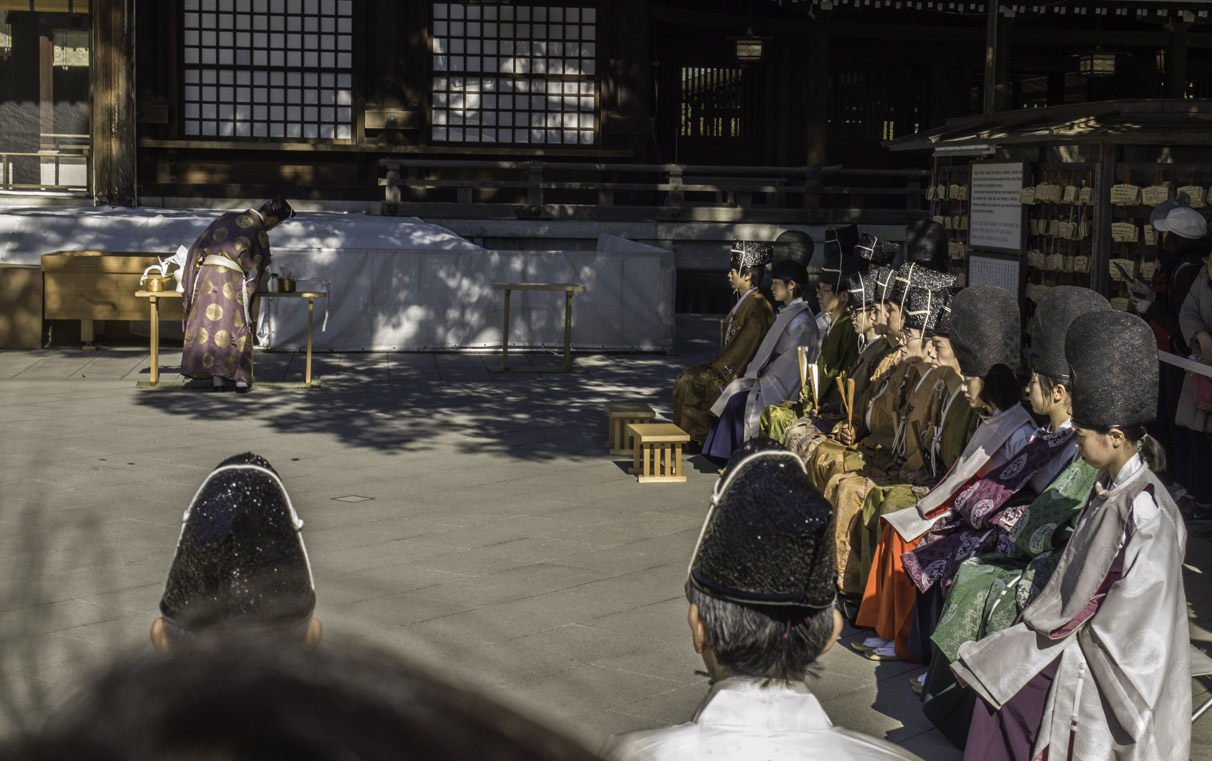
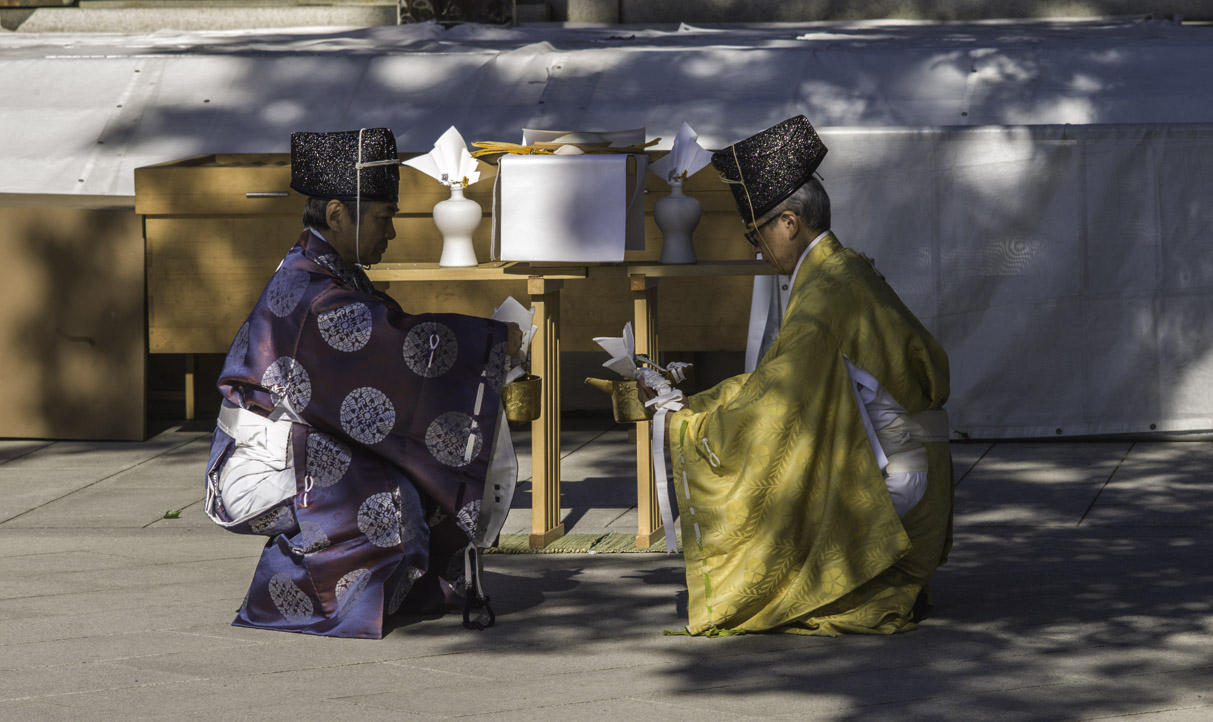
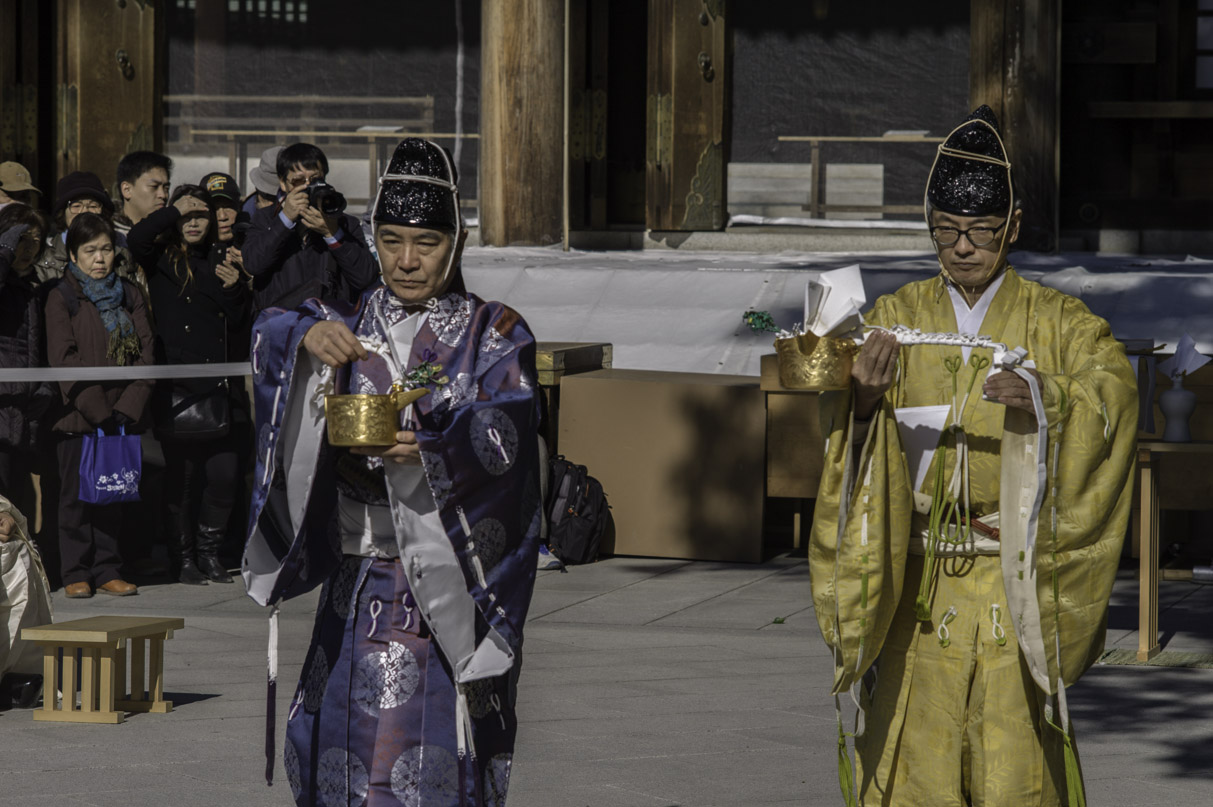
He then passed on to each of the 11 women and men,serving them the sake, and then also to the main priest, observing the ceremony from the opposite side.
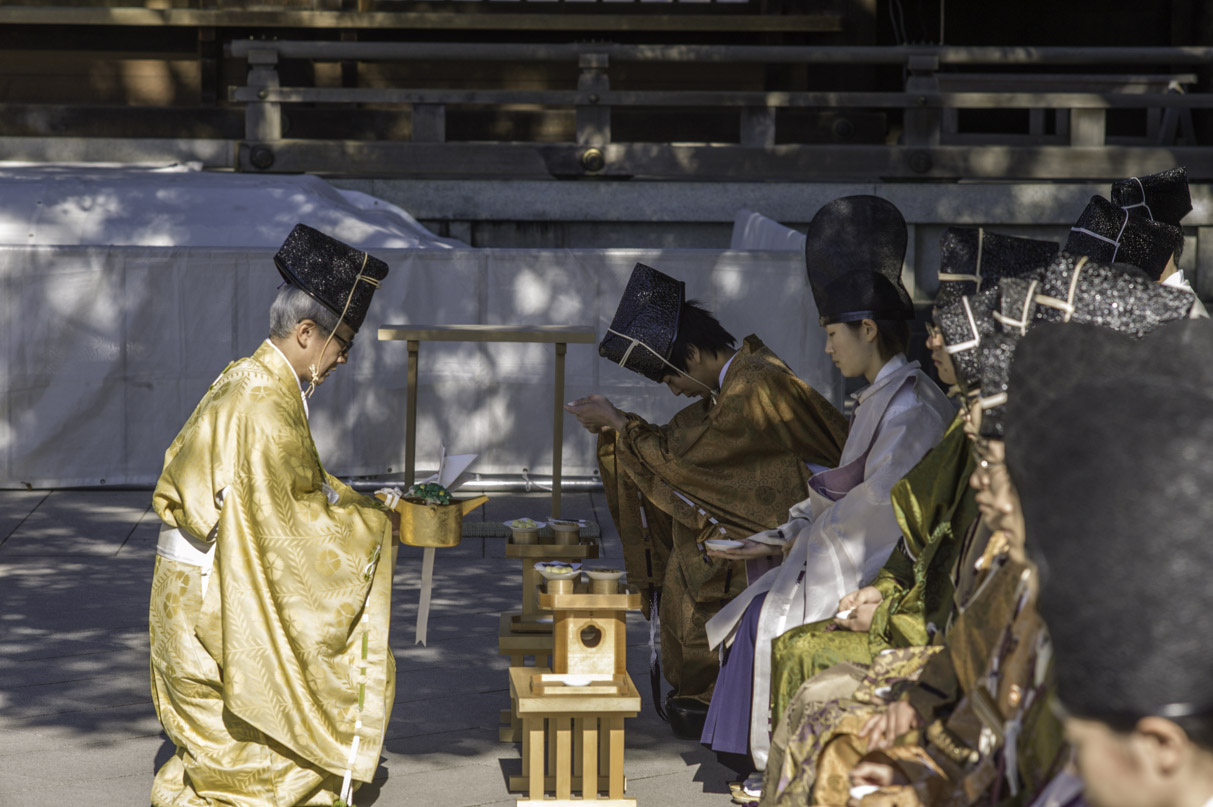
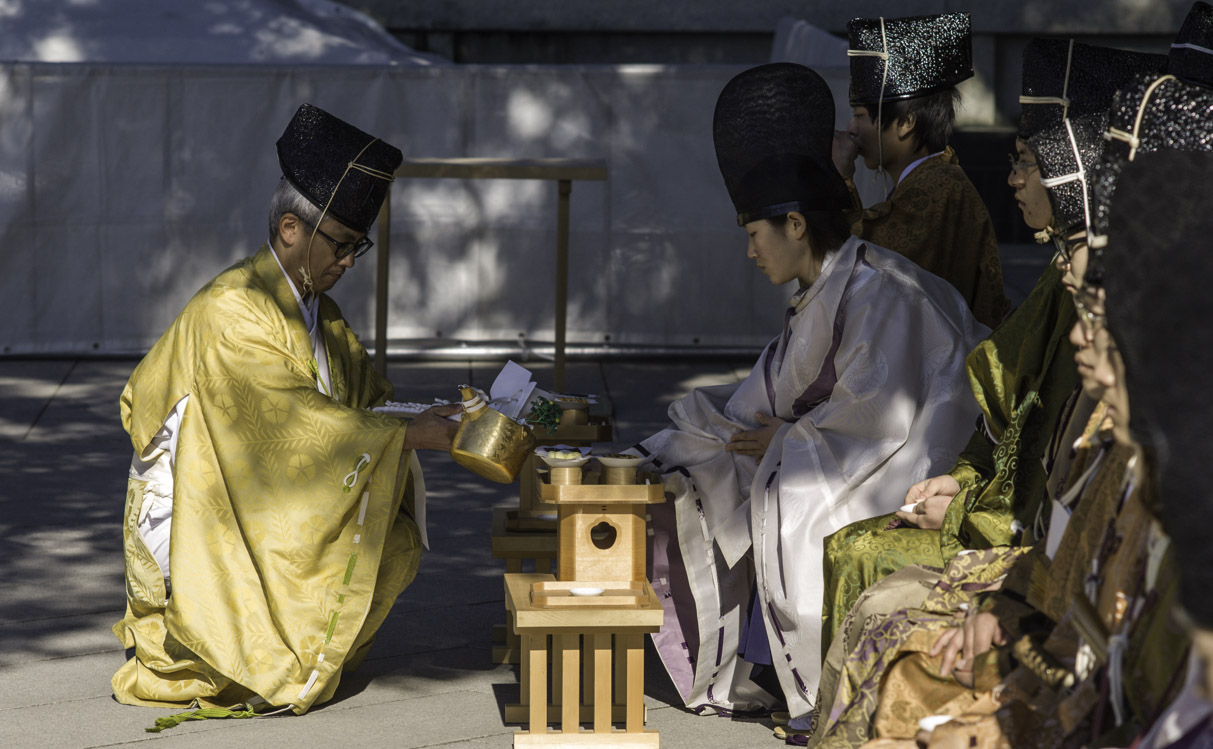
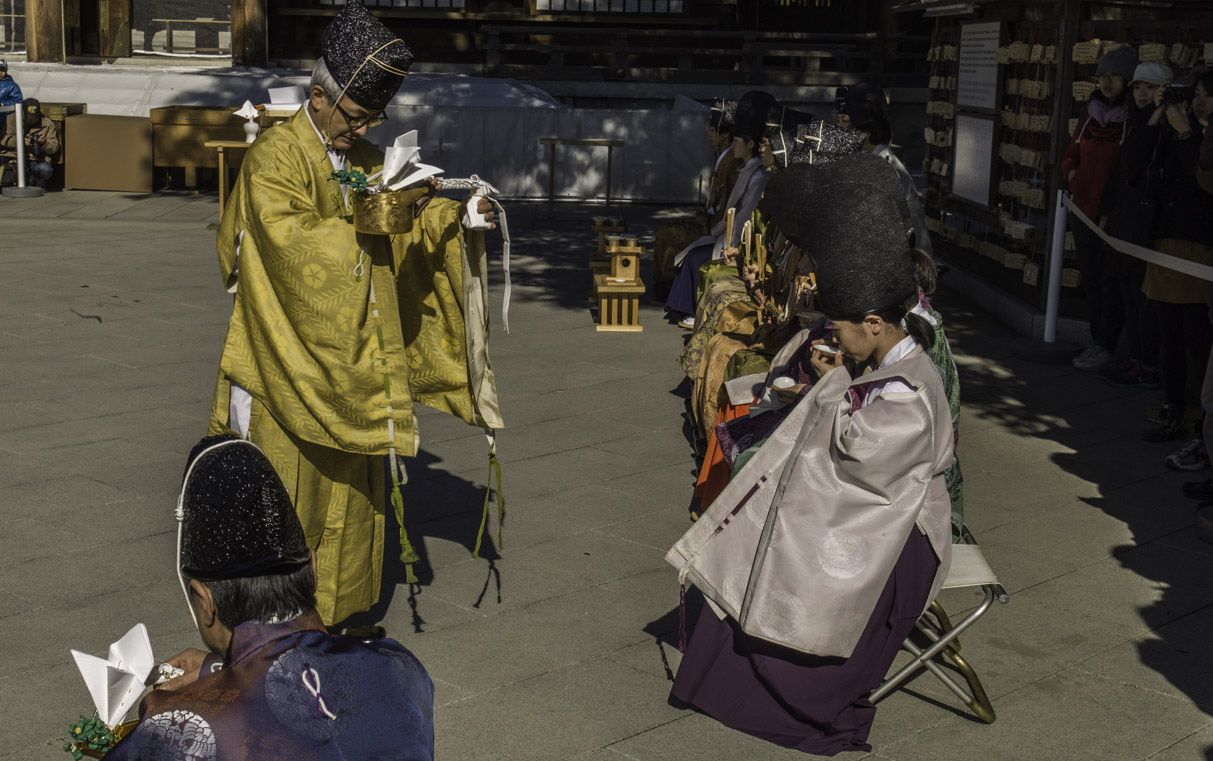
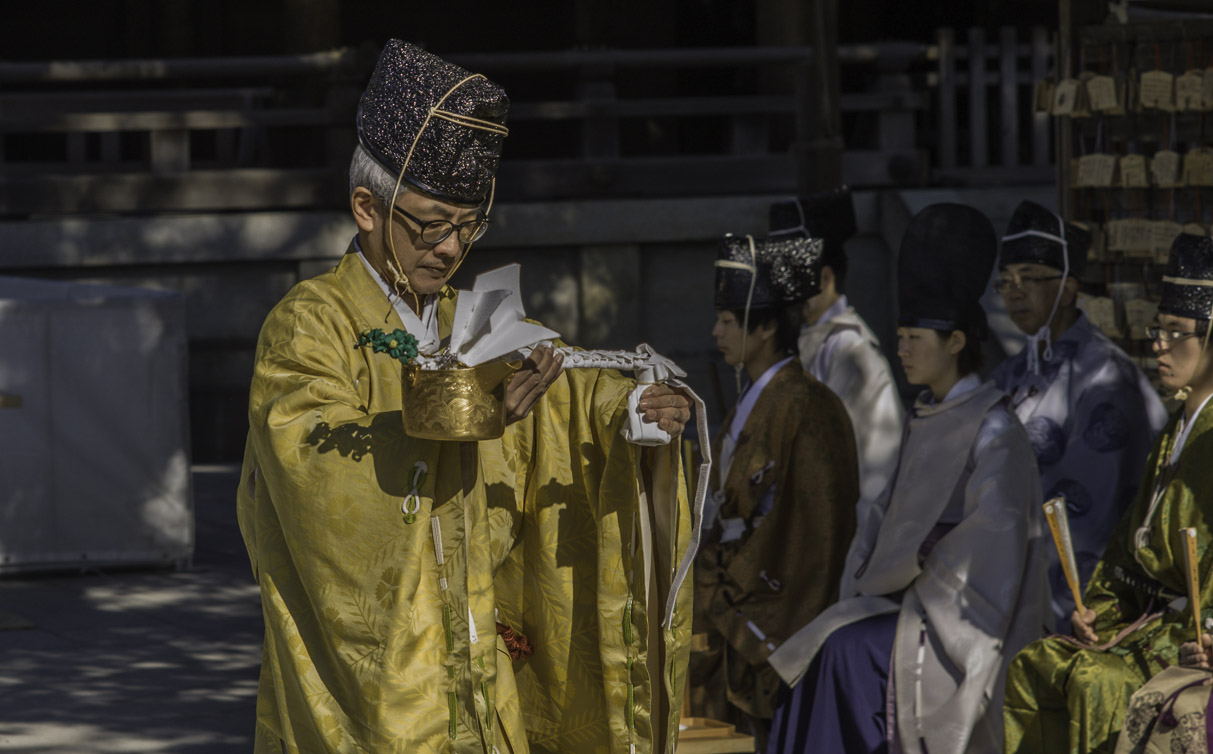
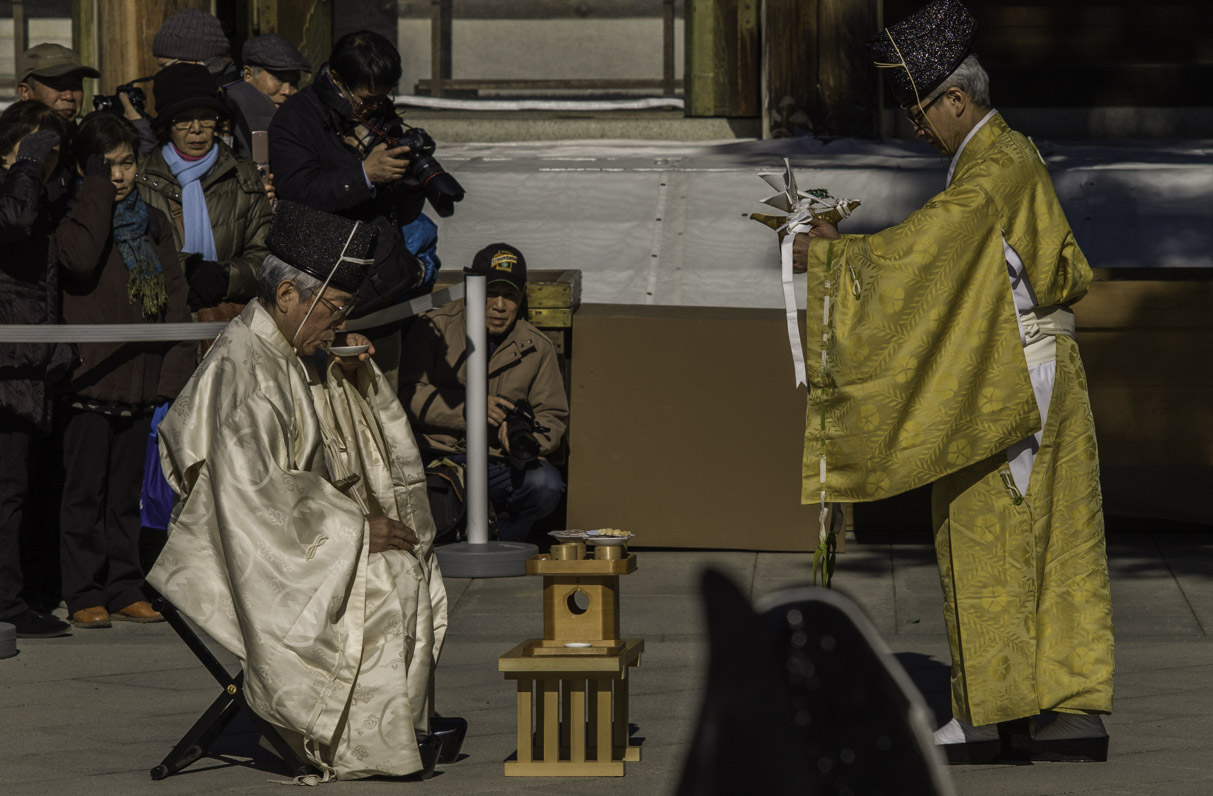
One more picture of two young adults who were leading the group with elderly sitting in the back guiding them through the ceremony. Then they got up to slowly leave the temporary “courtyard”.
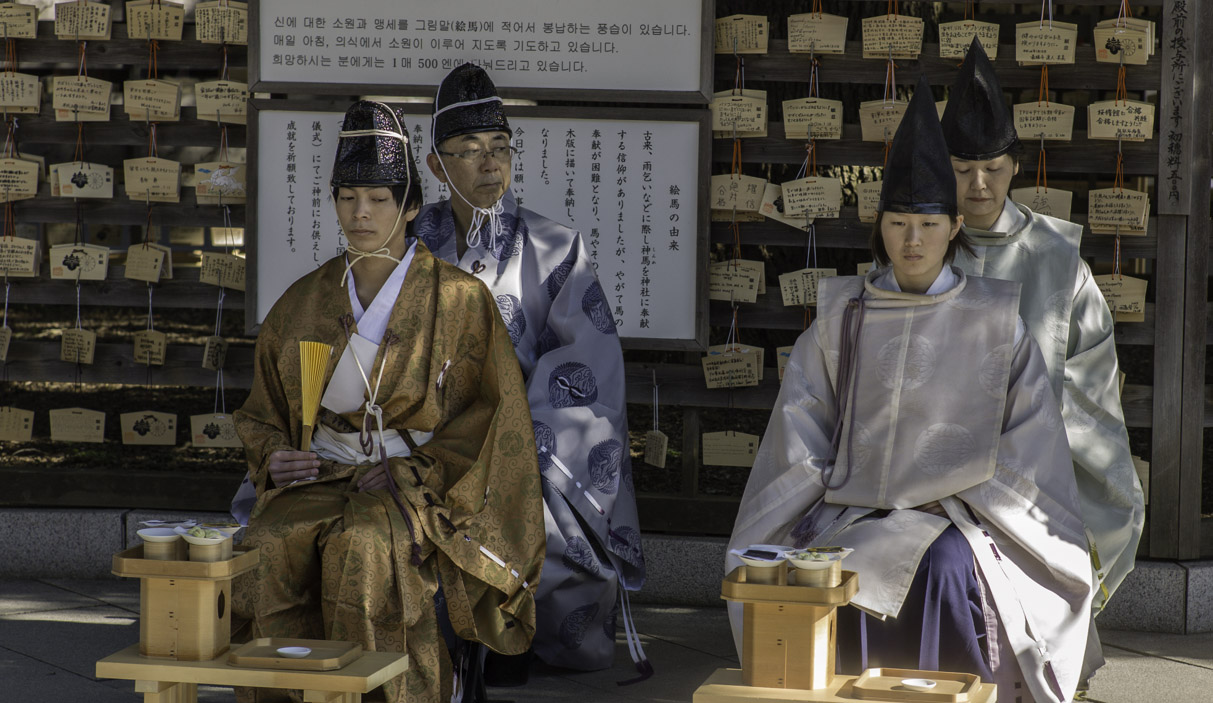
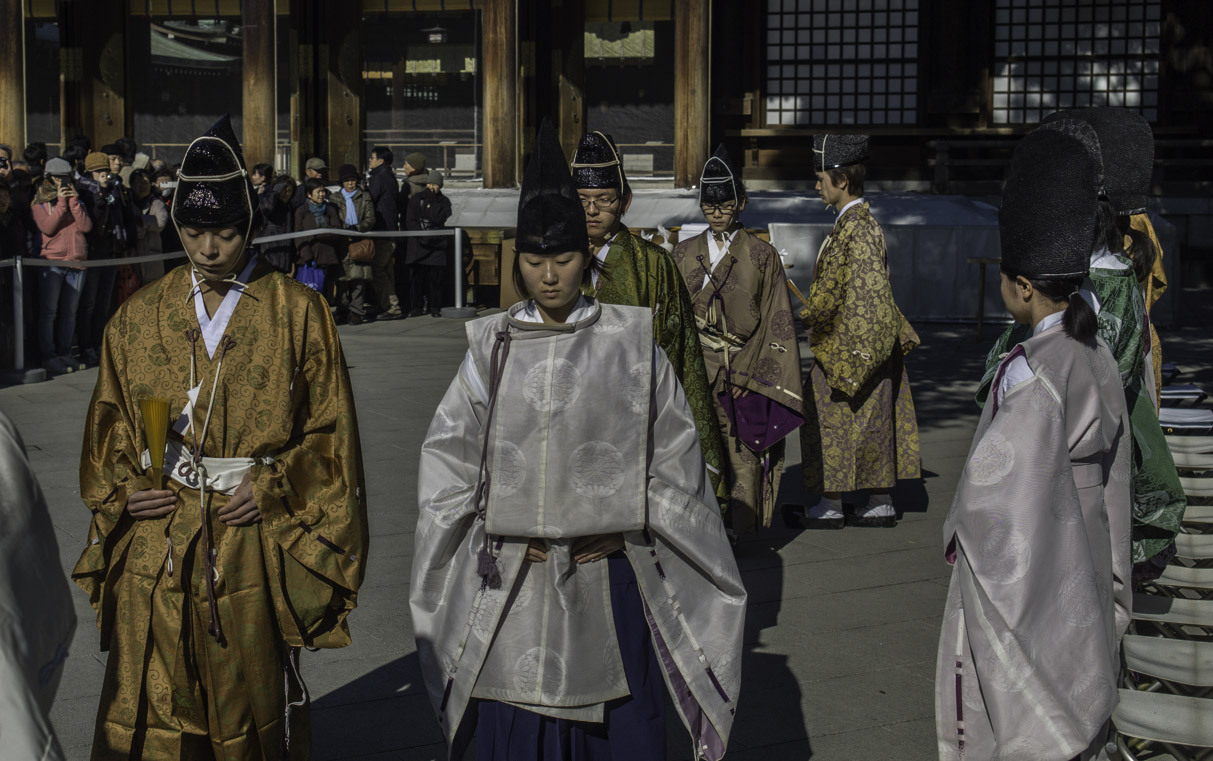
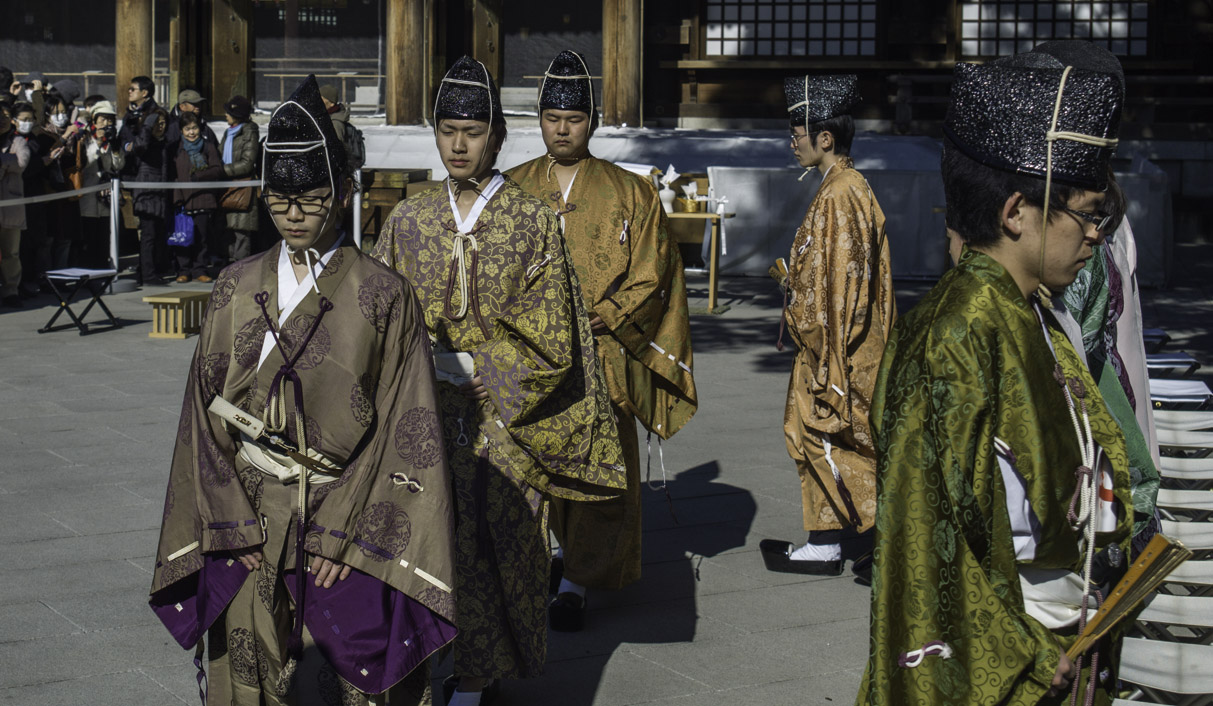
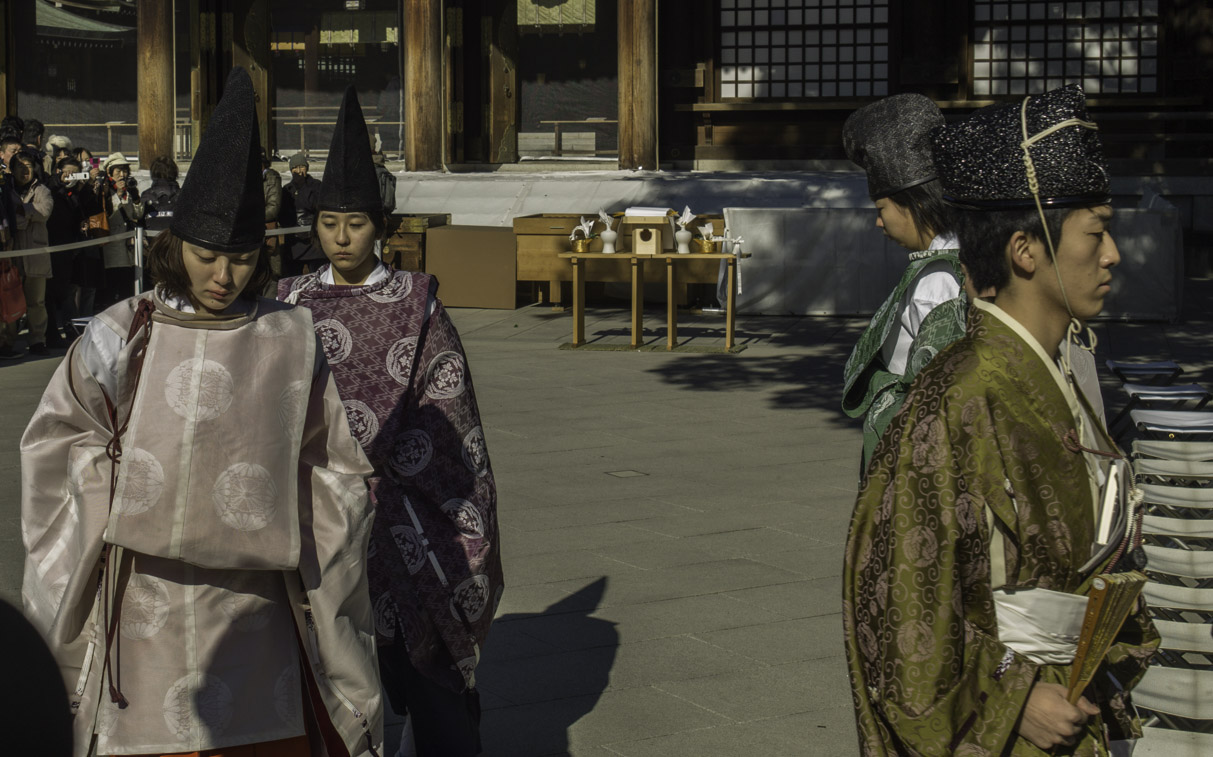
Afterwards the cleaning up started, including carrying away the sake bowls…
So I thought this event was over and turned to other objects which will cover a separate post about Shinto Weddings. Impressive to look at, isnt´t it.
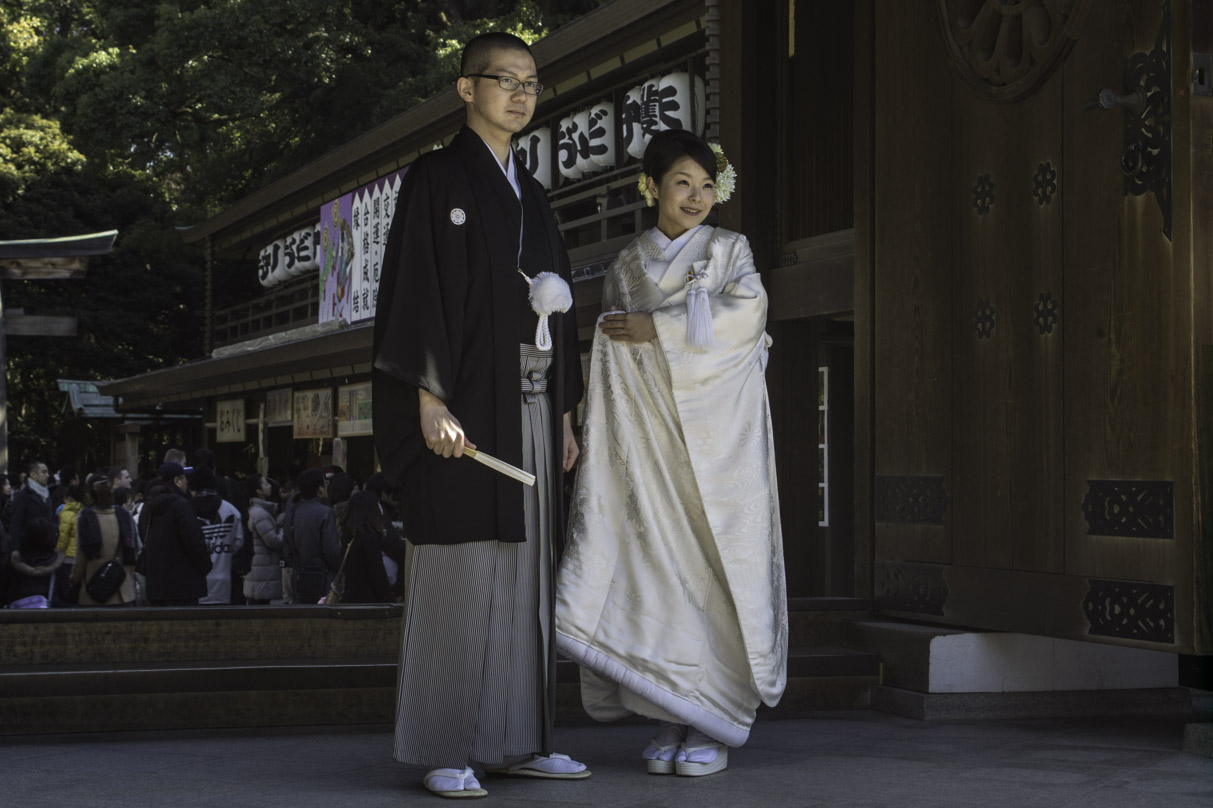
As I was strolling around at the other side of the shrine I saw a large group coming towards me and recognized some of the young fellows from the ceremony. Obviously they were going for their first prayers into the inner sanctuary of Meiji-Shrine, like also wedding couples do.
Before entering the stopped on the side where a pries was waiting with a Tamagushi. Tamagushi is a form of Shinto offering made from a sakaki-tree branch decorated with shide strips of washi paper, silk, or cotton. At Japanese weddings, funerals, miyamairi and other ceremonies at Shinto shrines, Tamagushi are ritually presented to the kami (gods). The big Tamagushi was also briefly waived over the attendees before the proceeded to the inner courtyard. Well I could not cover that part of the ceremony.
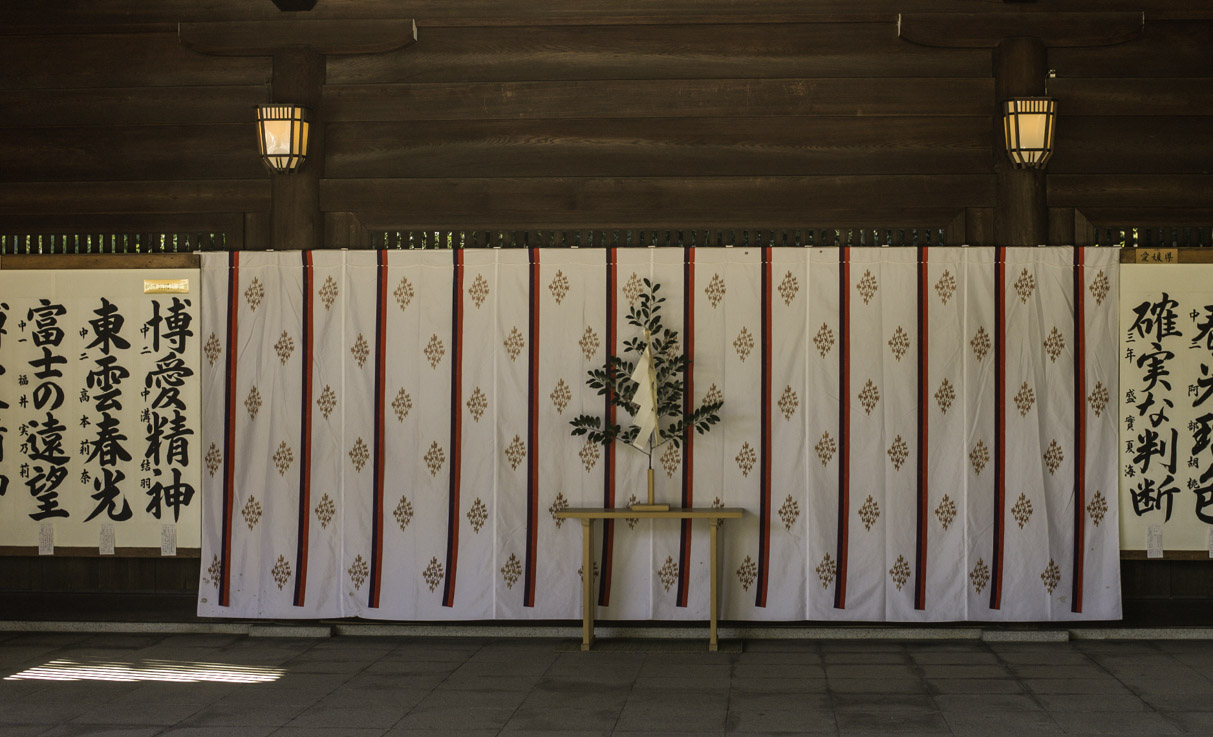
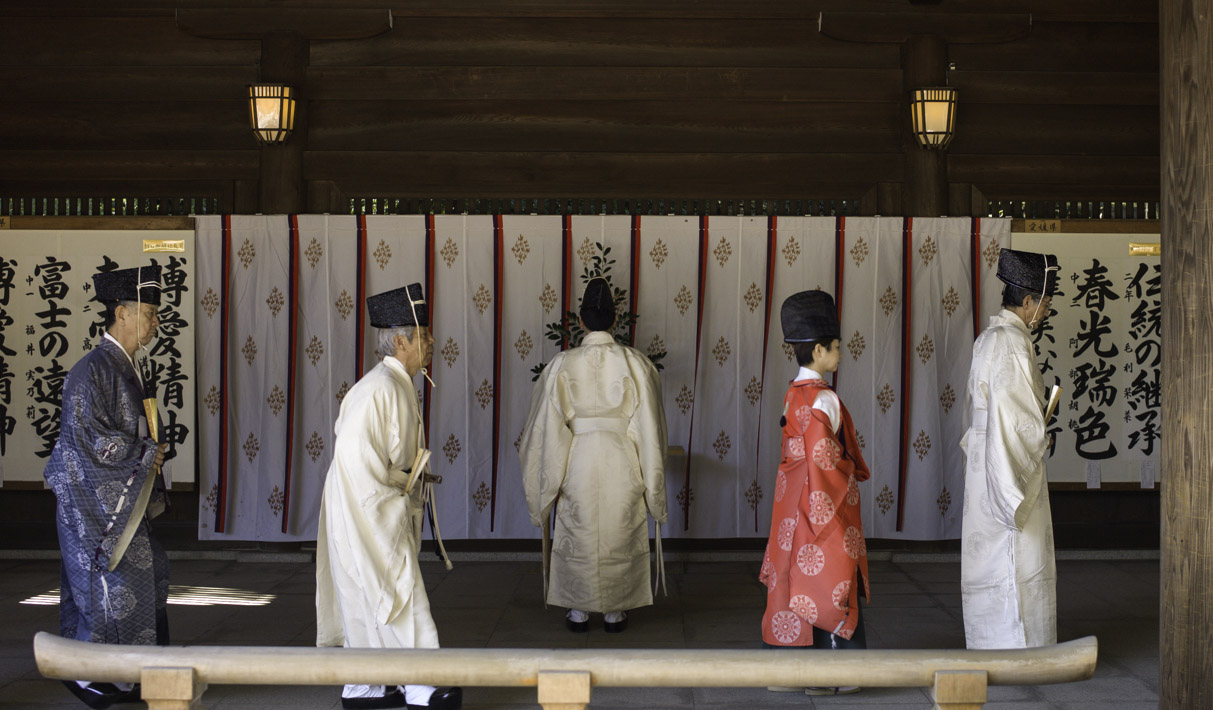
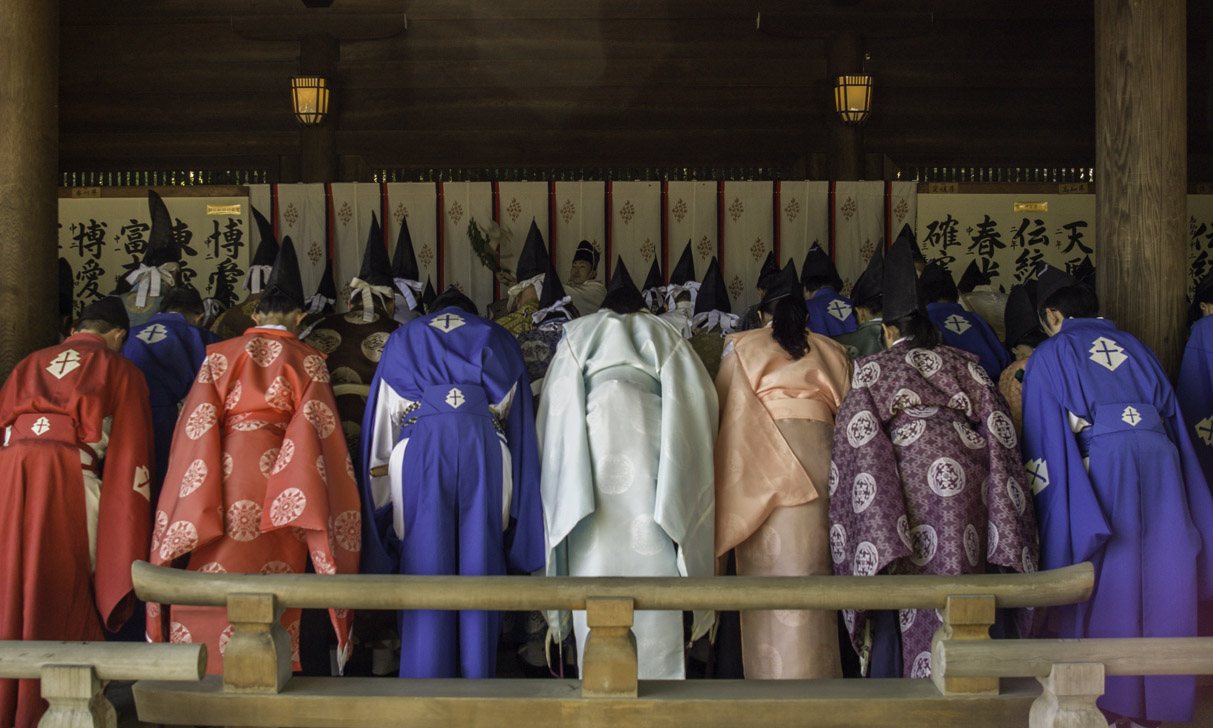
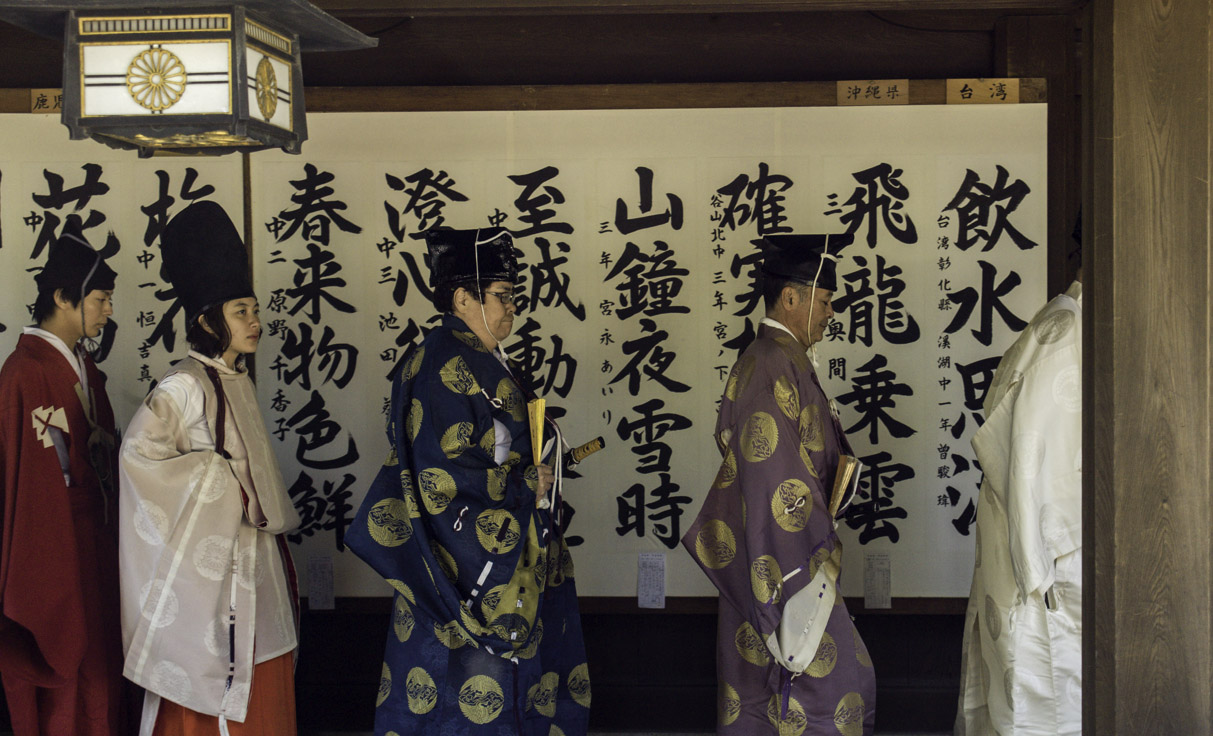
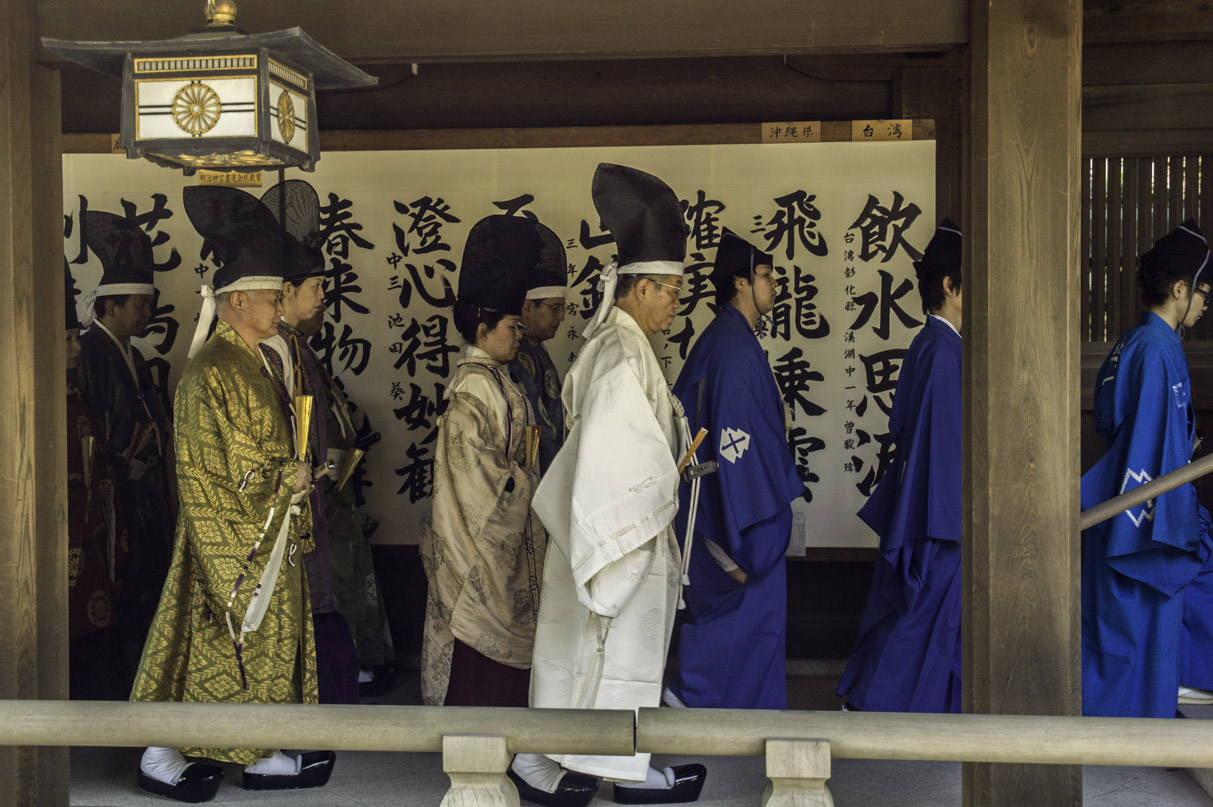
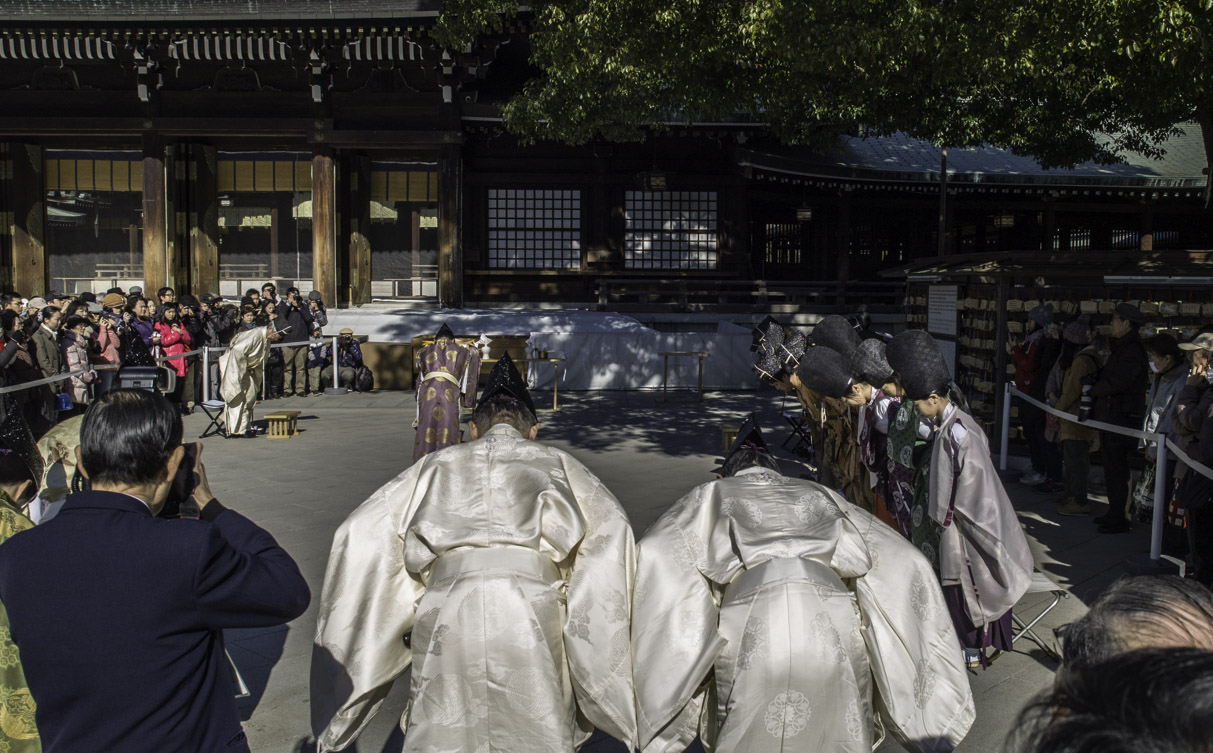
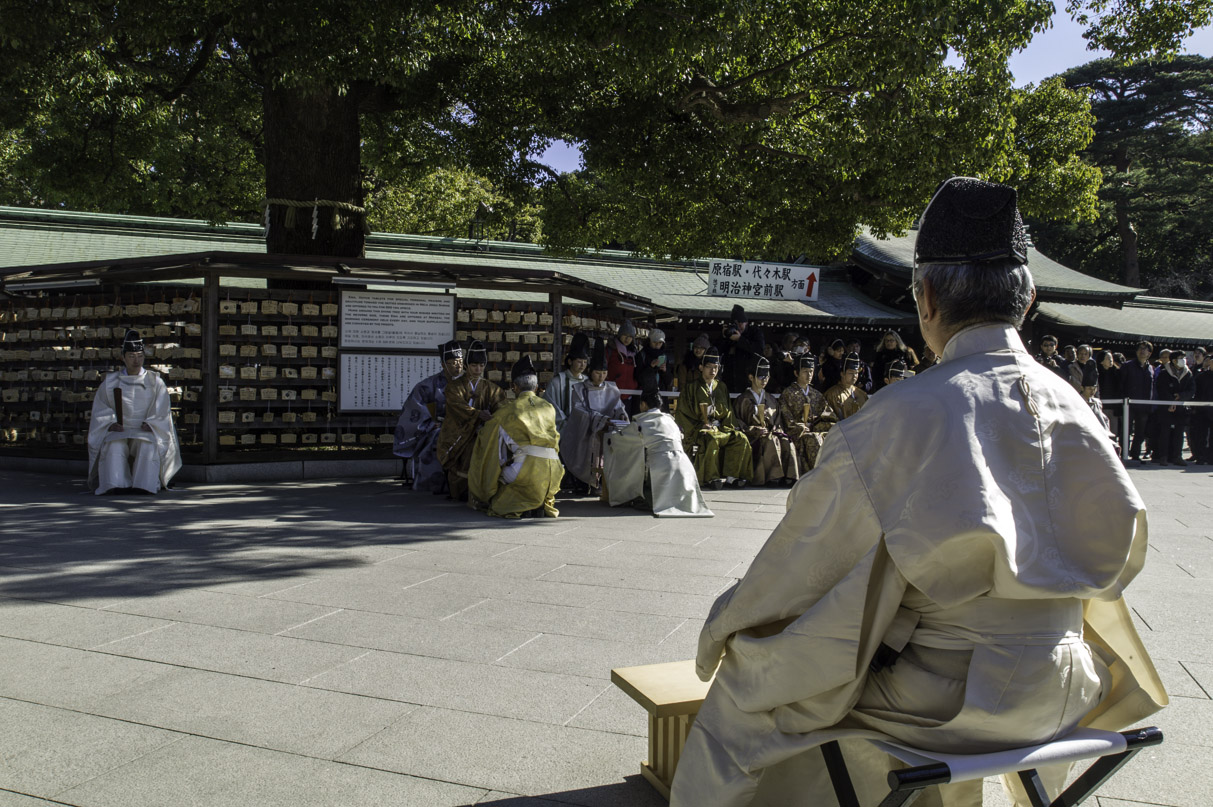
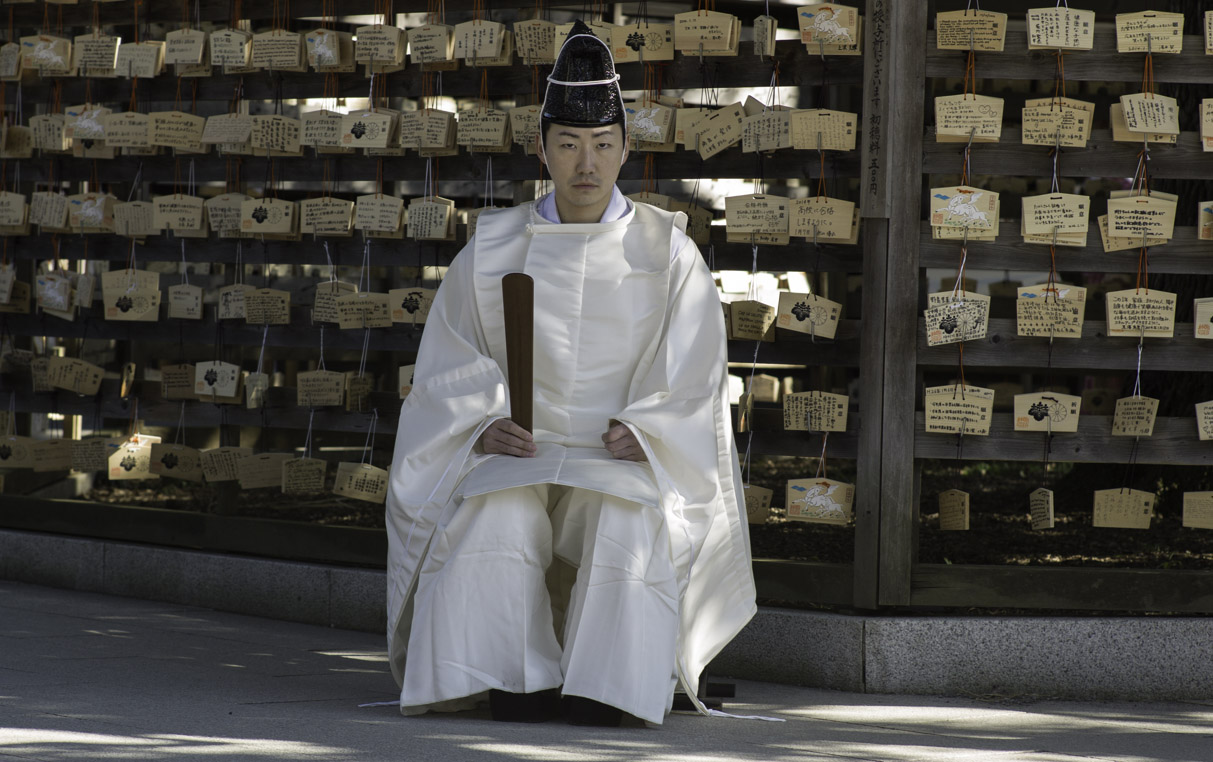
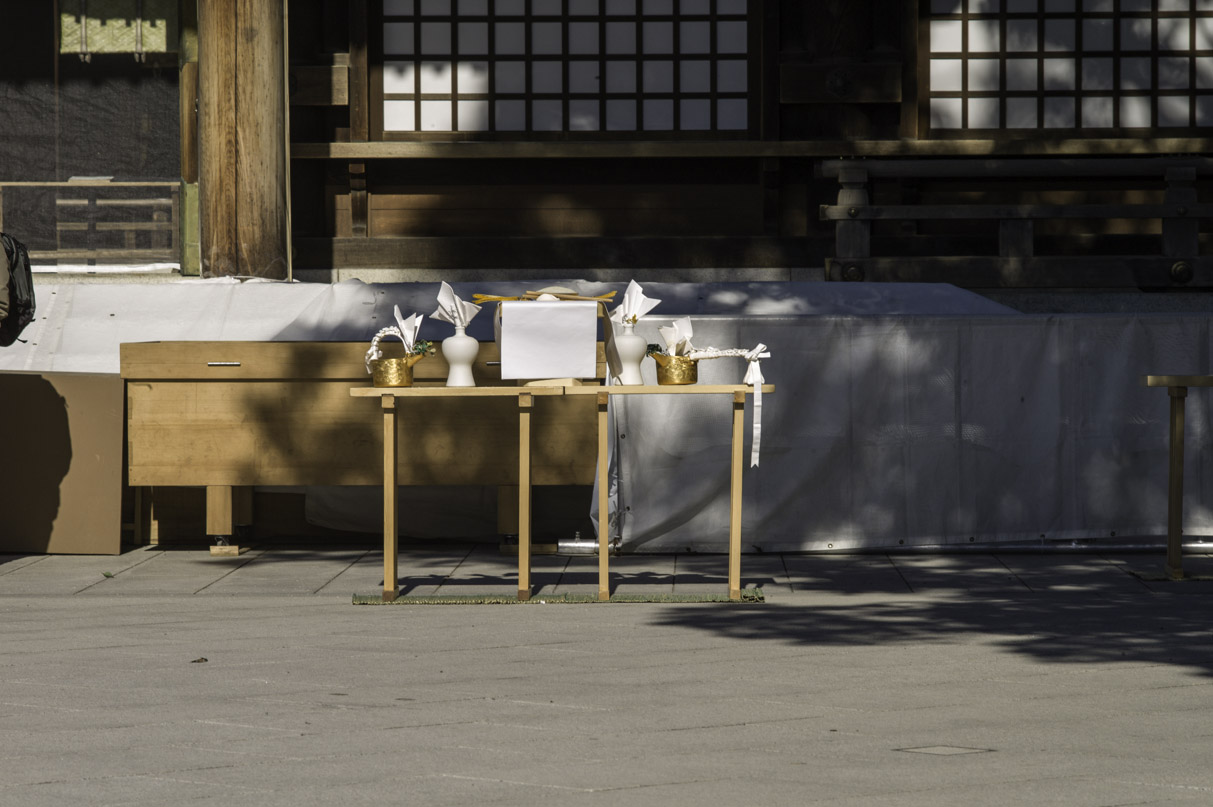
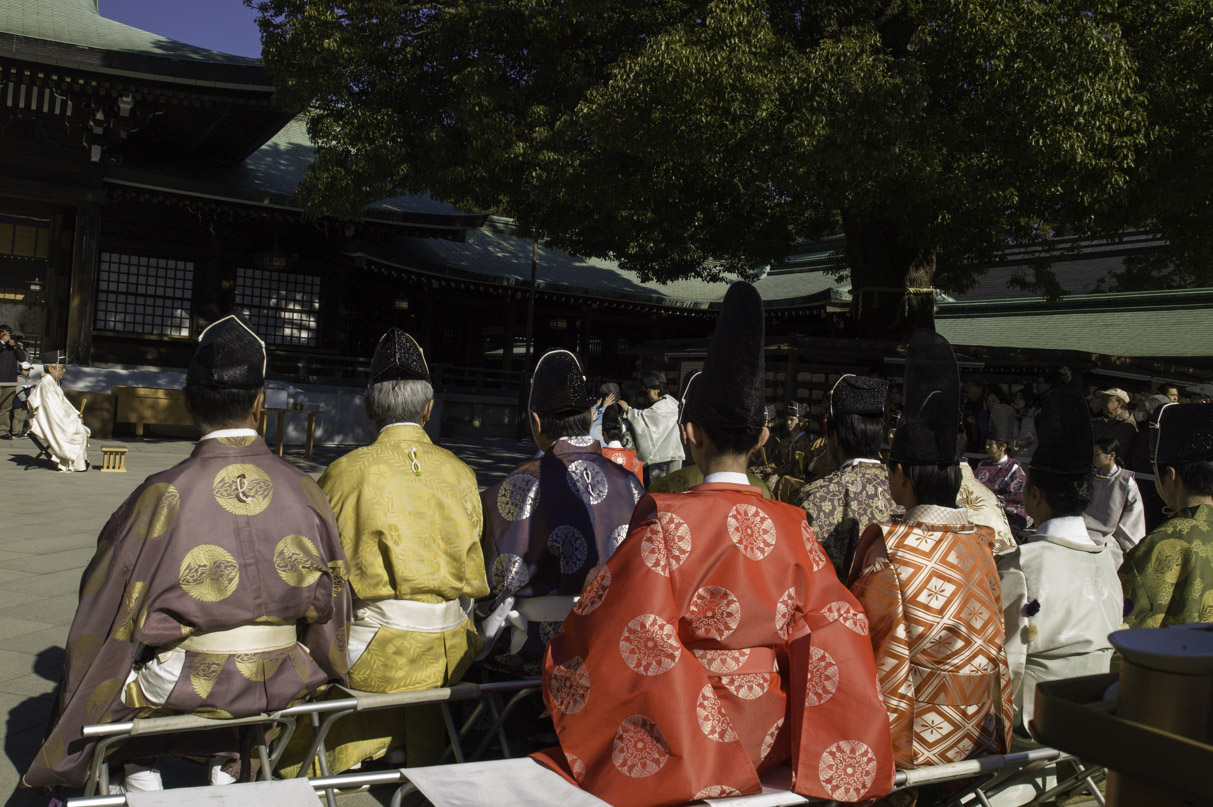
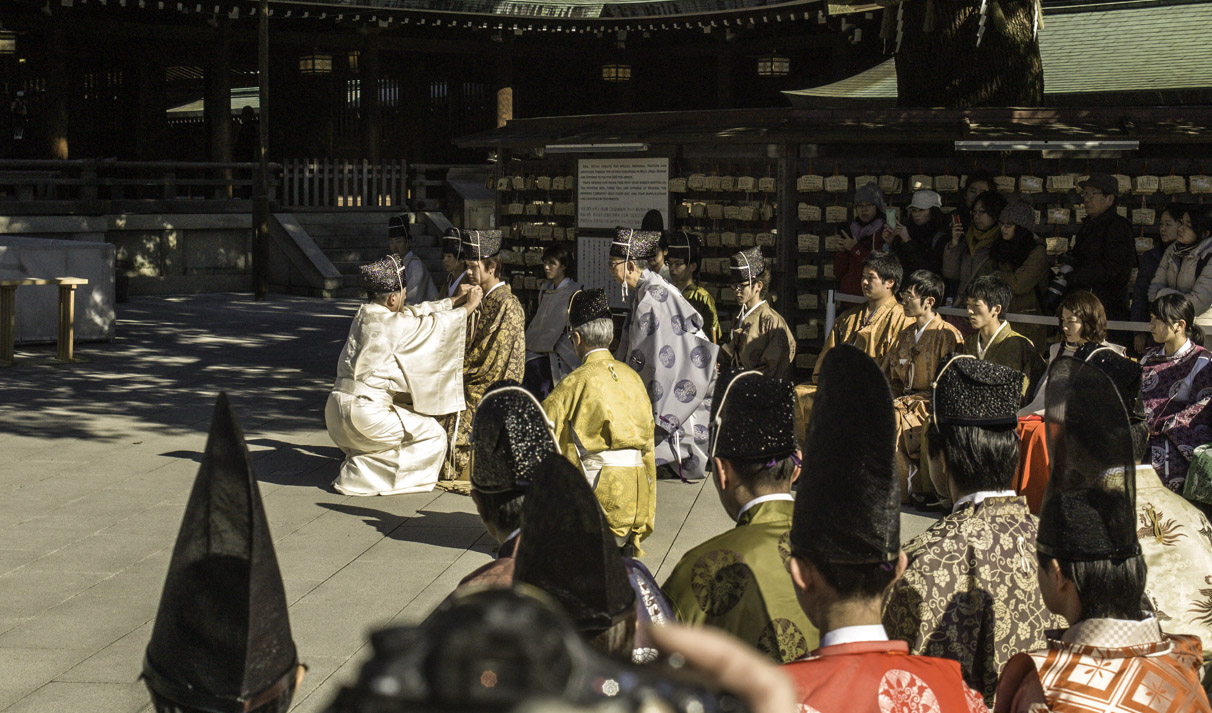
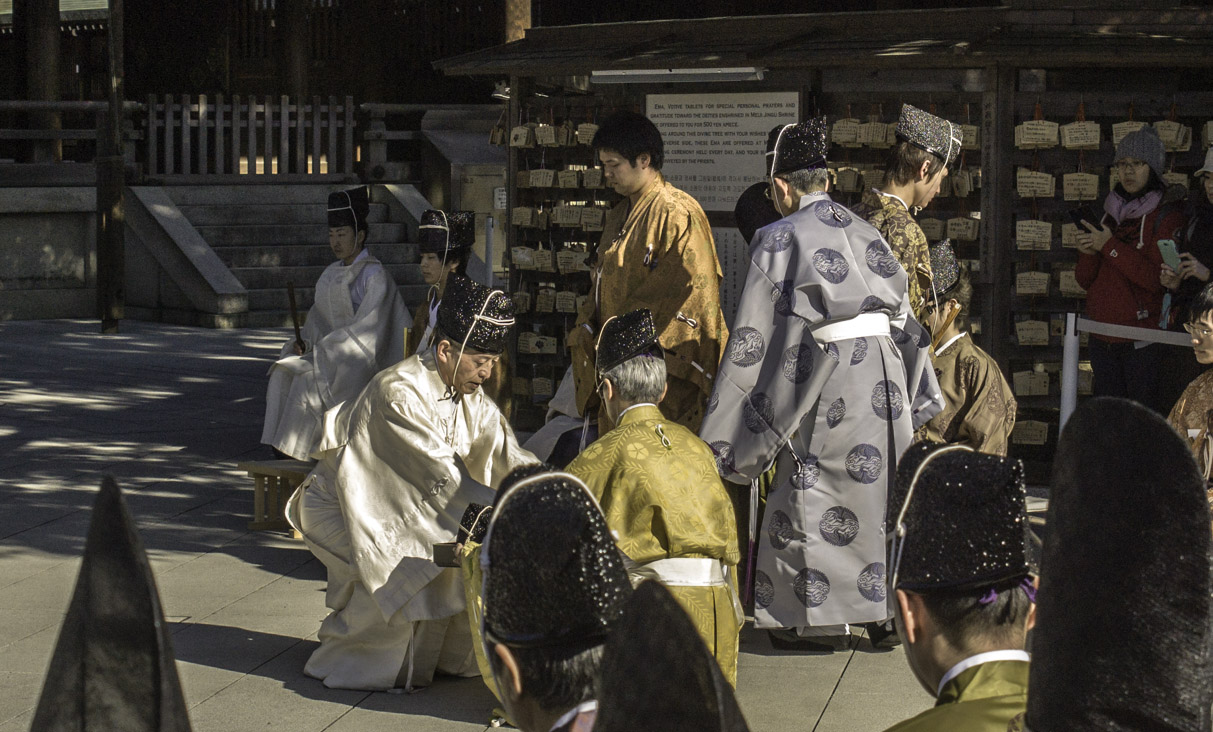
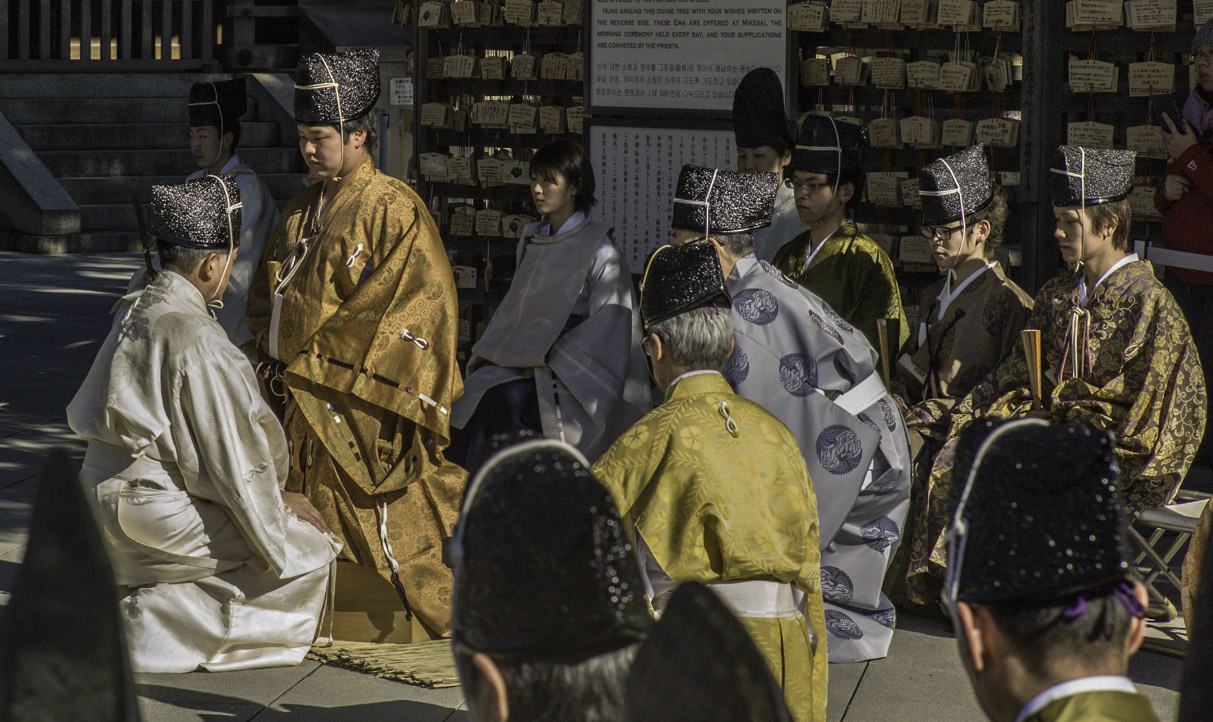
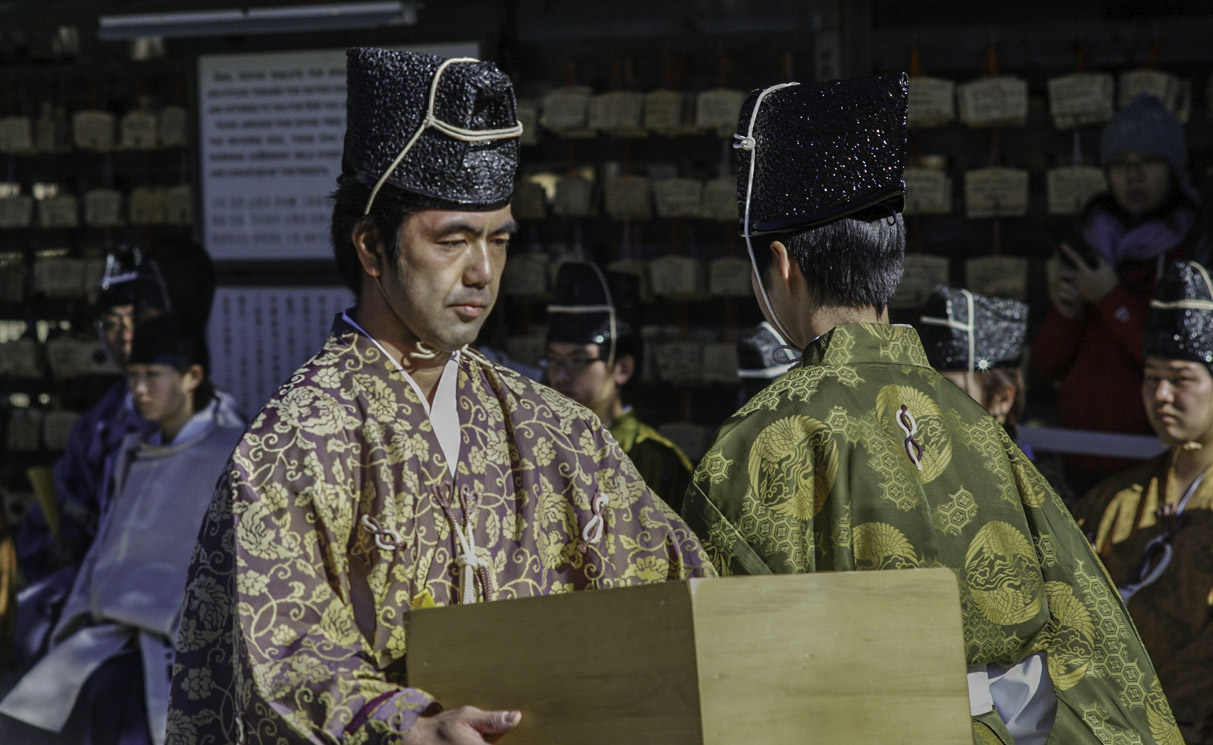
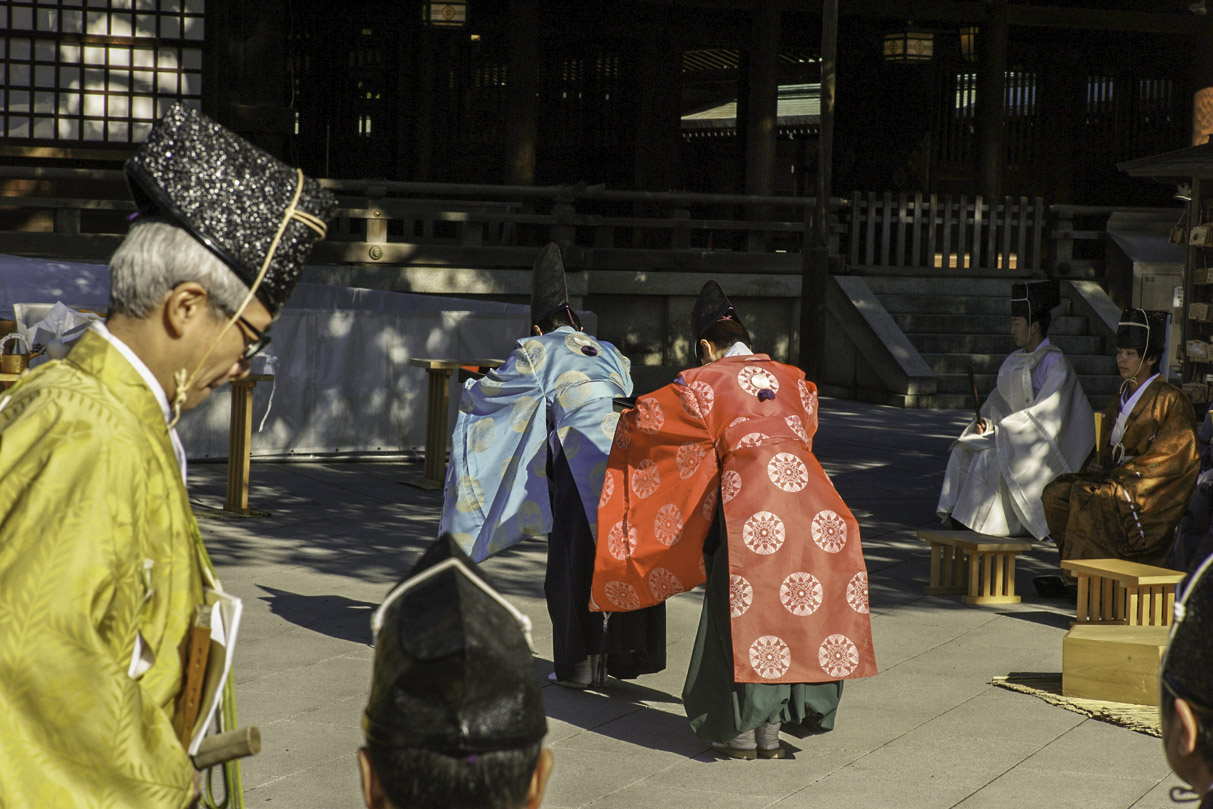
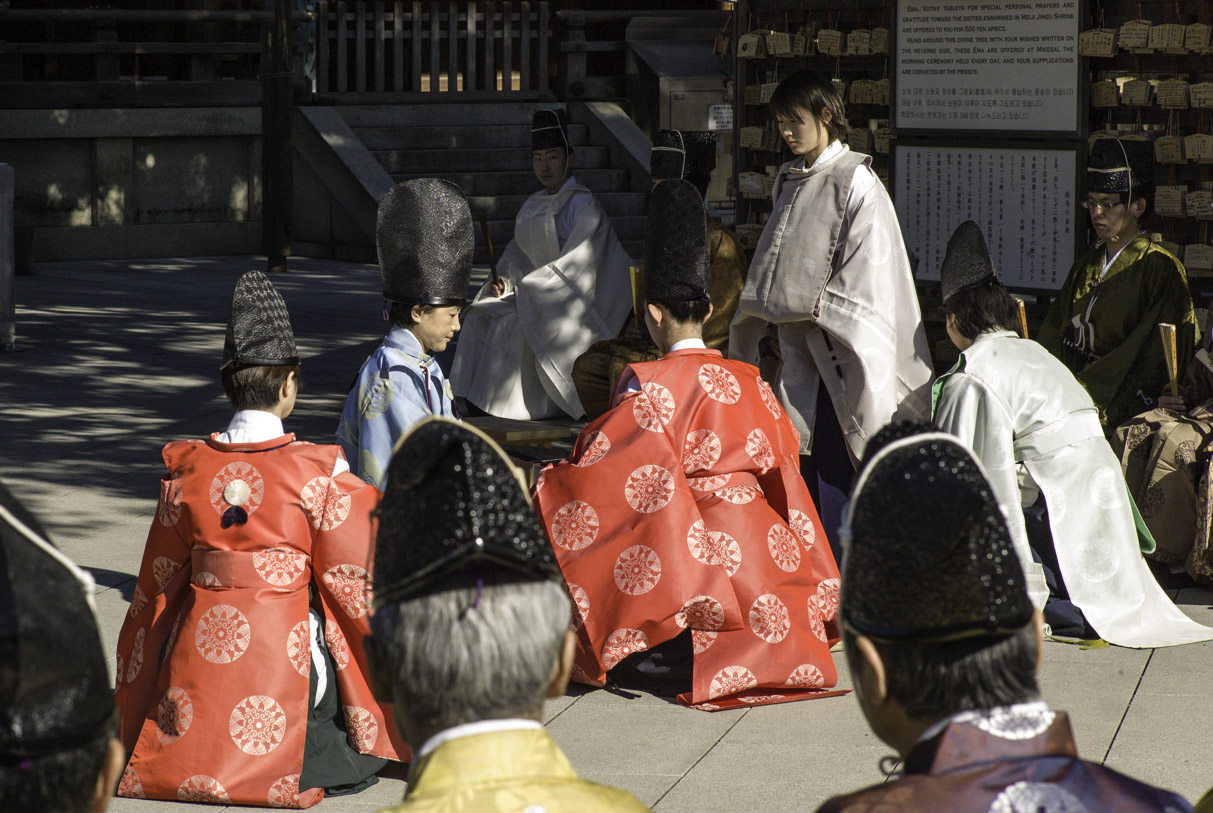

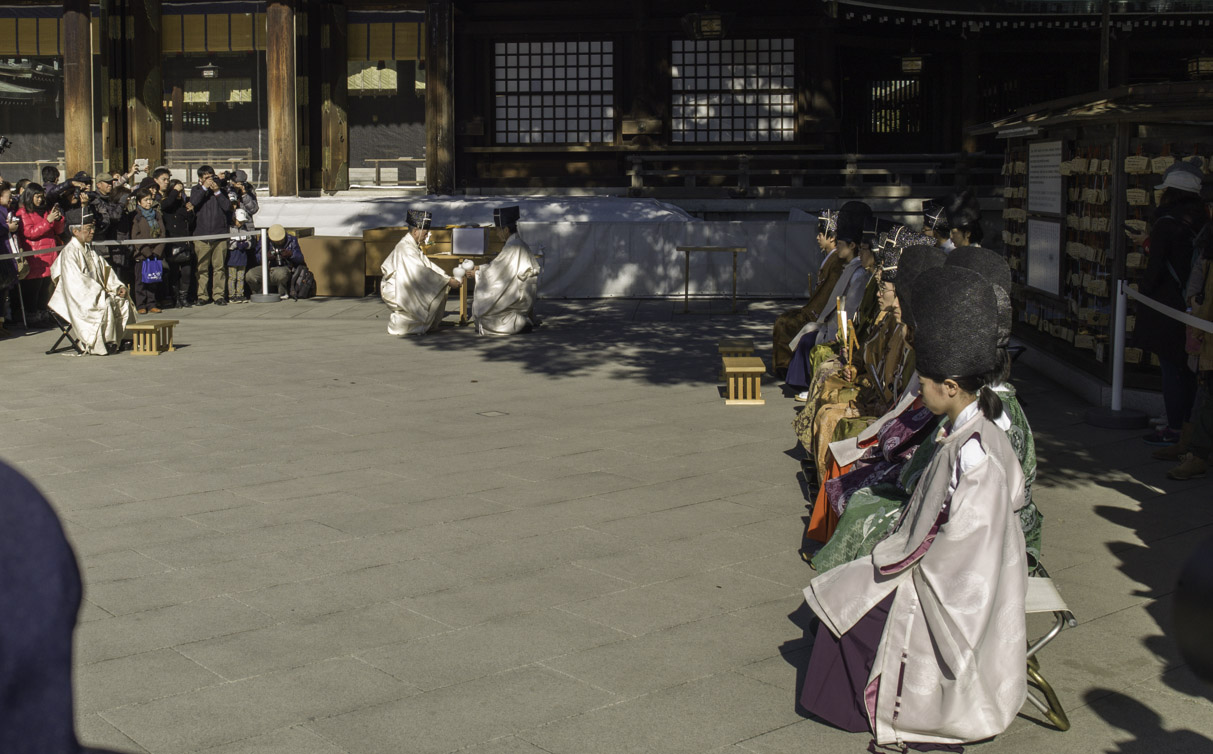
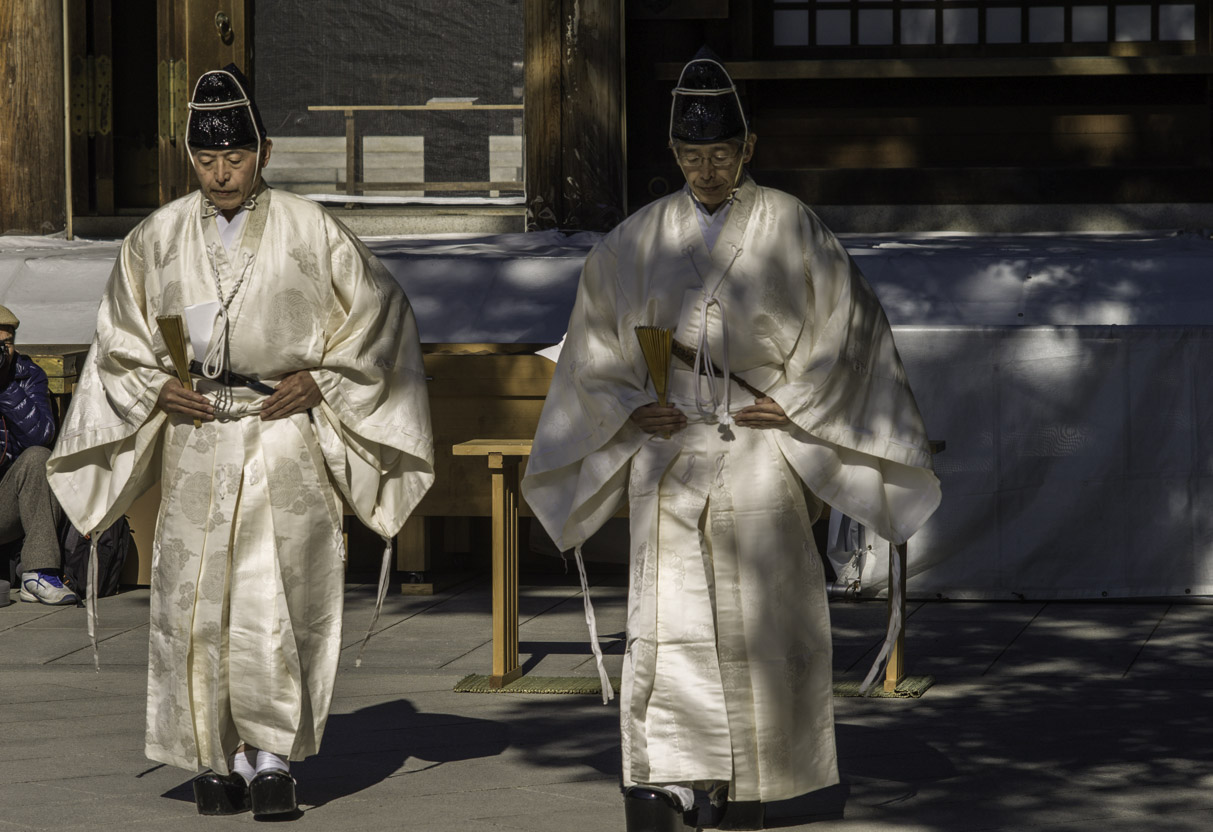
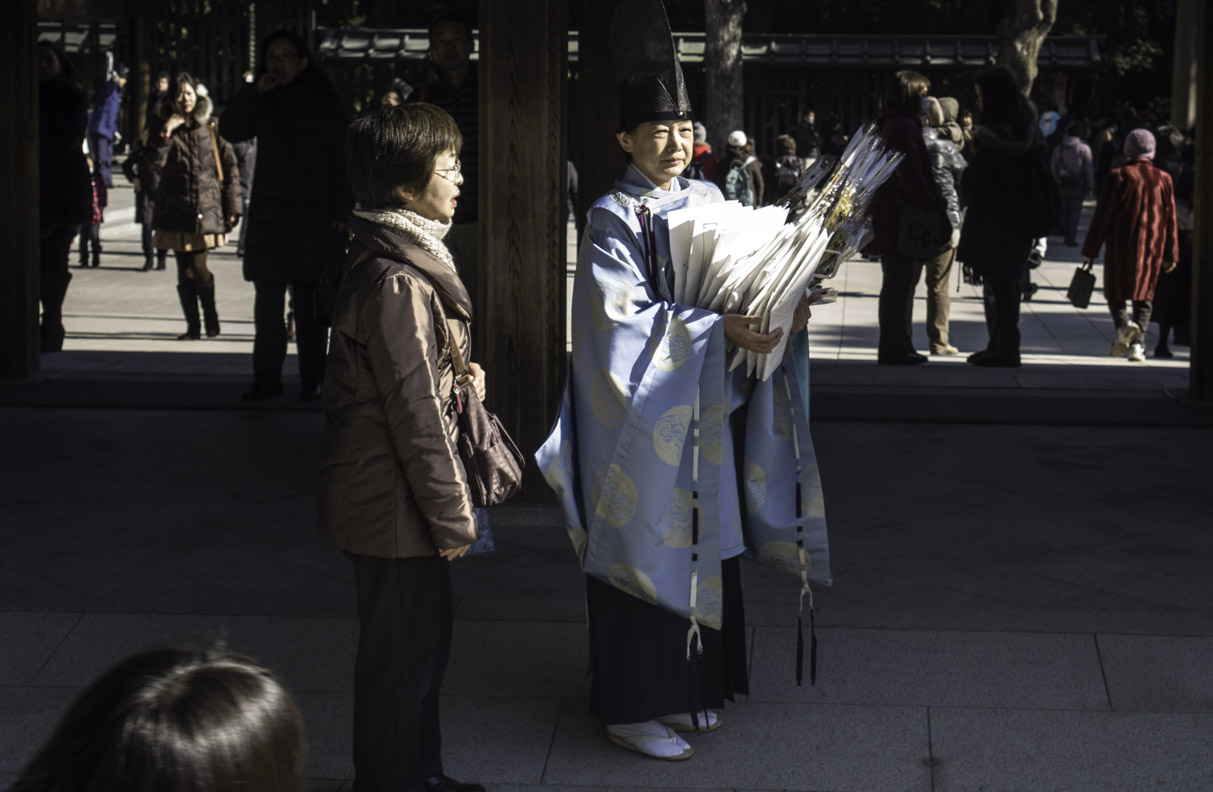
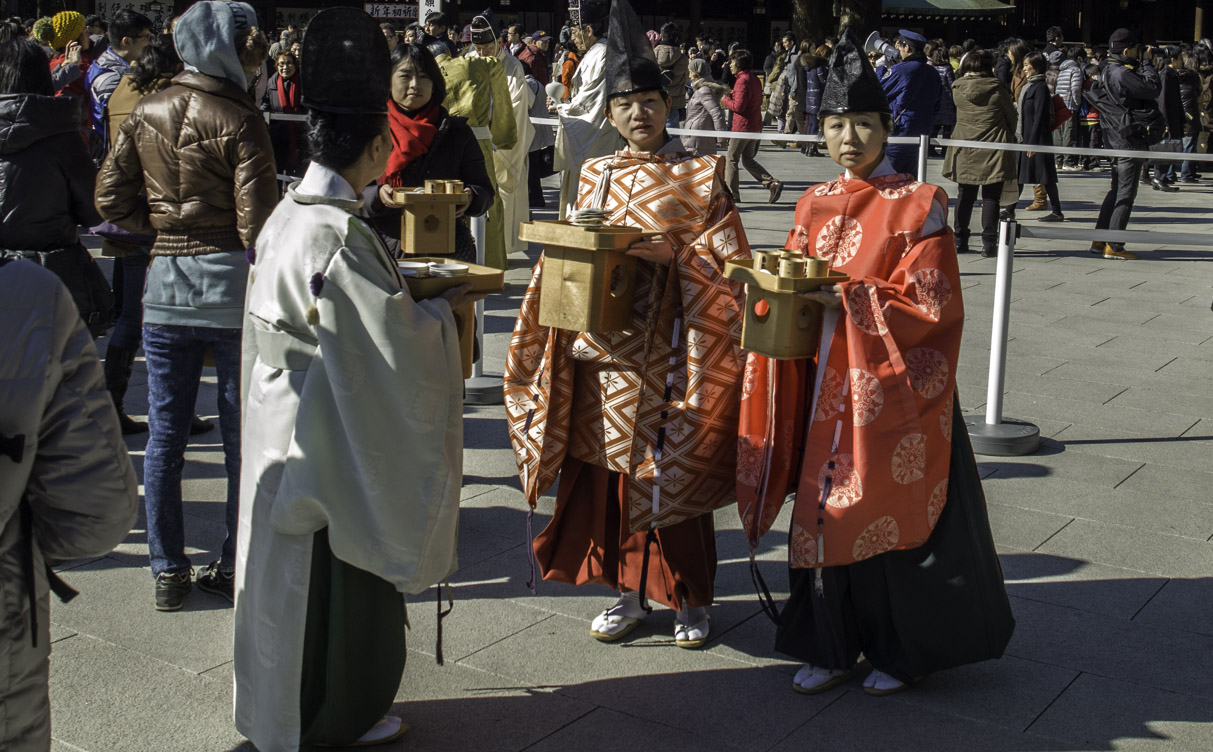
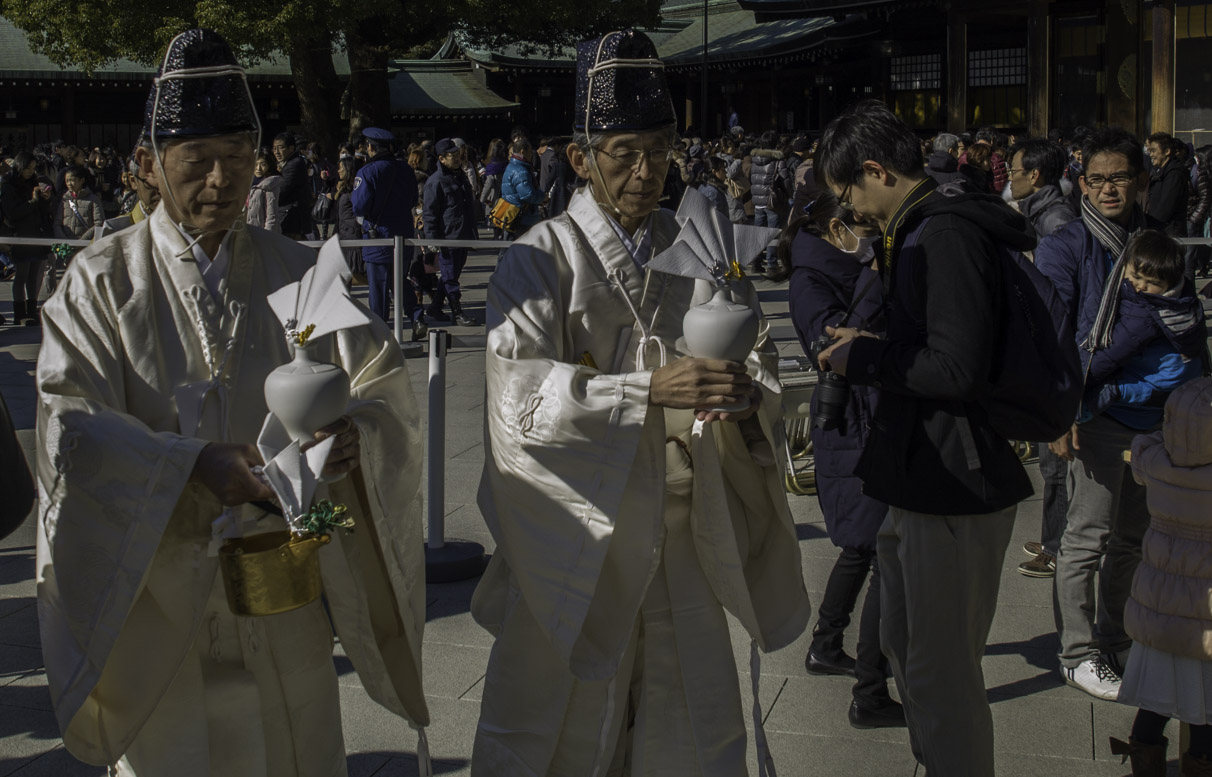
Leave a Reply